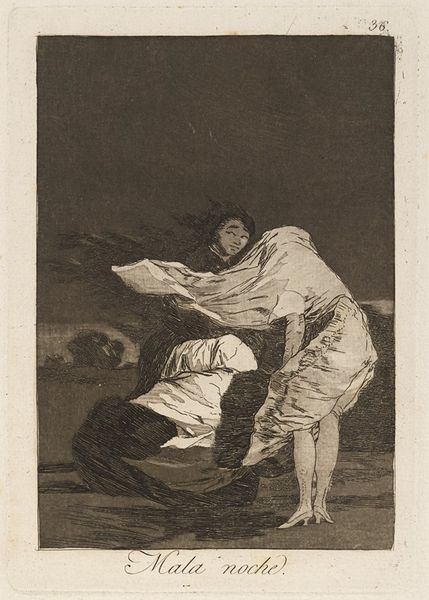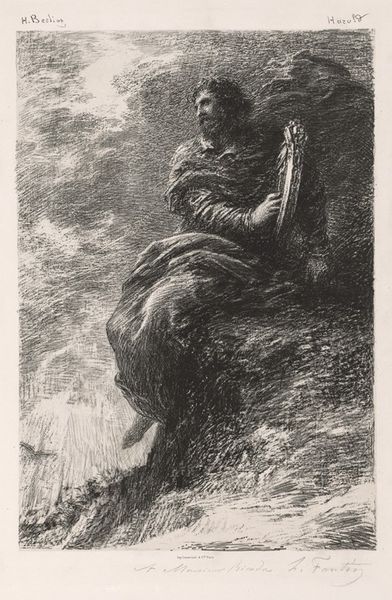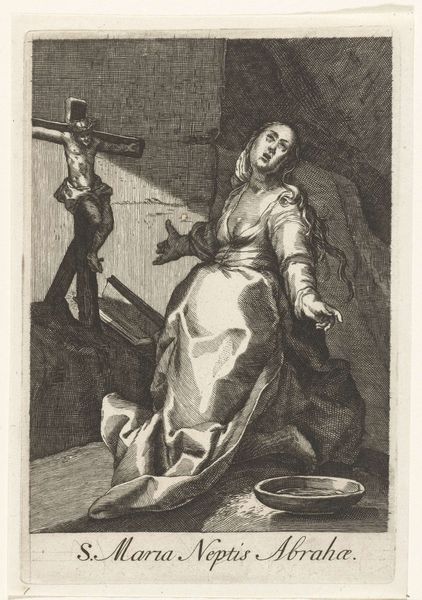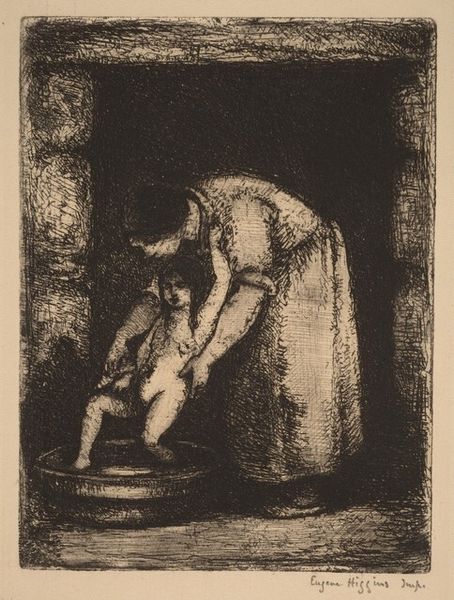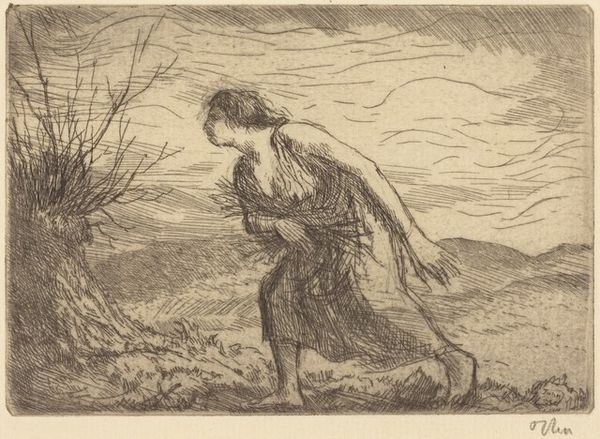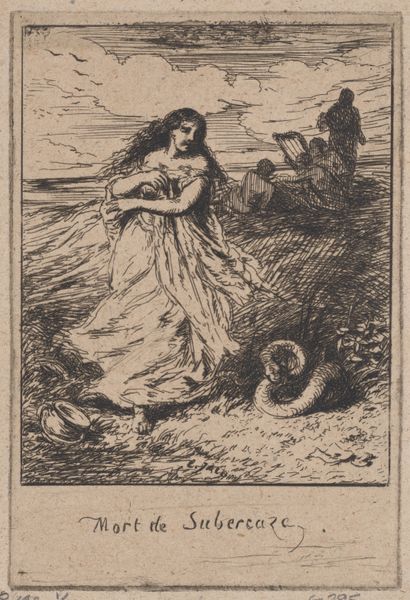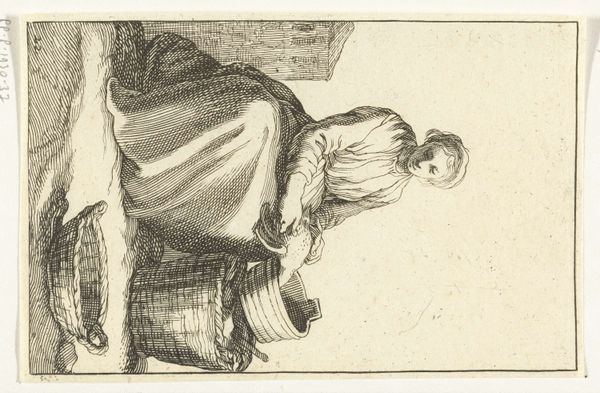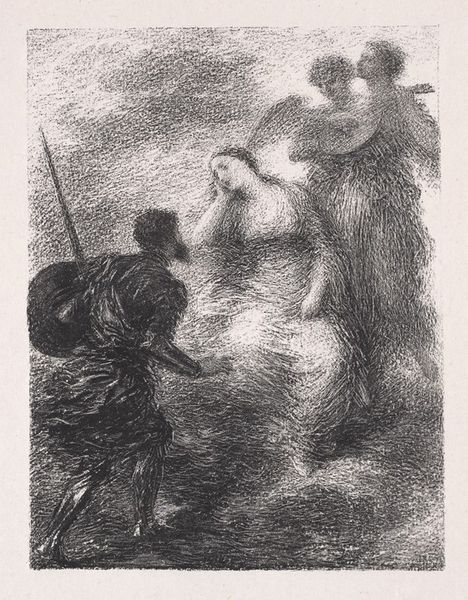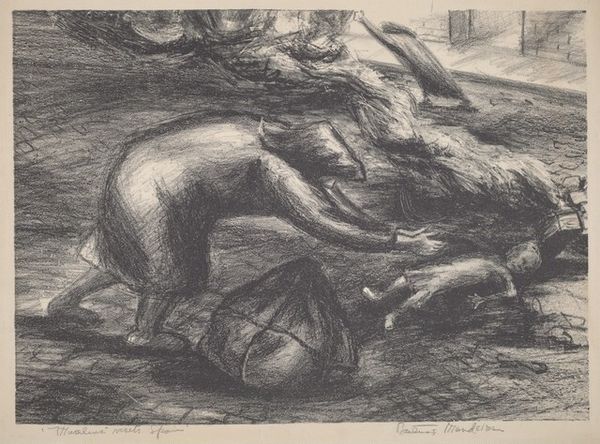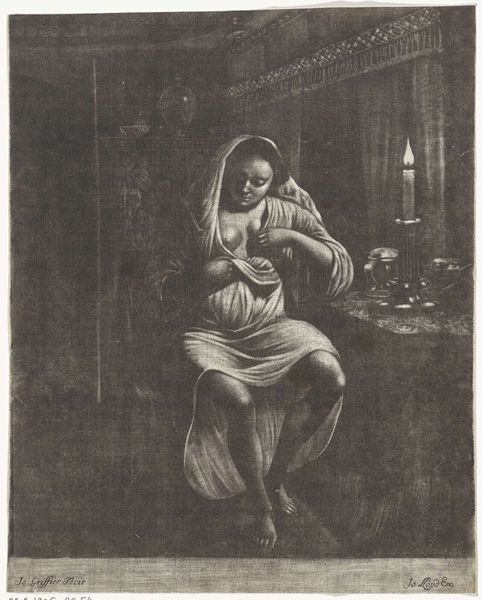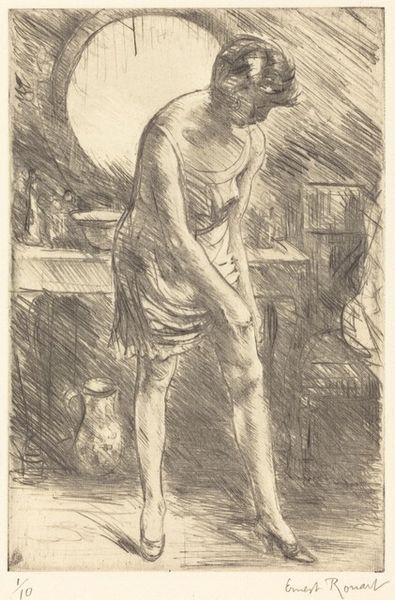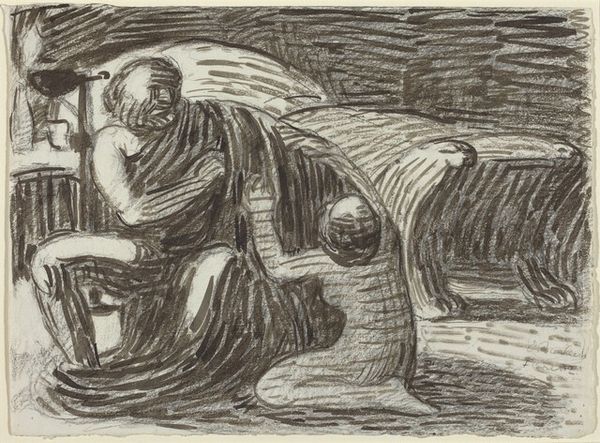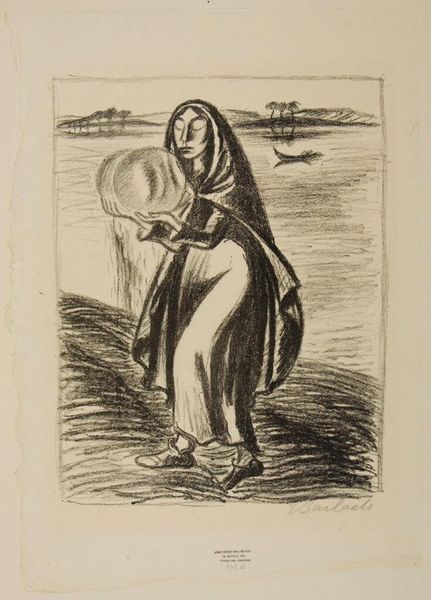
Dimensions: Image:350 x 350mm Sheet:427 x 385mm
Copyright: National Gallery of Art: CC0 1.0
Curator: This drawing, entitled "Poland '46," was completed in 1946 and likely made with graphite or charcoal. Its stark imagery certainly evokes a strong reaction, doesn’t it? Editor: Absolutely. The rawness is what hits me first—the distressed, smudged textures and how immediate the emotion feels. You can feel the weight of what’s happening. Curator: Considering it was made just after the Second World War, the image must be understood within that specific context. What narratives might this tell us about Poland in that period? Editor: To me, the social and personal narrative is clear: loss, displacement, and survival. The figure's covered face suggests a desire for anonymity but also alludes to collective trauma and perhaps even a sense of shame. And what are these skeletal structures looming over these children? They're practically fused to the mother. This feels almost allegorical. Curator: Right, it certainly reflects a societal reckoning with devastation on a massive scale. Remember, much Polish cultural heritage and infrastructure were destroyed during the war. The artist likely saw it as their civic duty to respond. We also shouldn't forget the constraints they may have faced exhibiting artworks with overtly critical messaging so soon after the war. Editor: That makes me think of the loaded symbolism around motherhood, then and now. Was she allowed autonomy or pressured to survive under duress? To bear the standard for recovery in a landscape marred by suffering? Curator: I’m particularly drawn to how the composition forces the viewer to meet the woman's gaze. It’s challenging, confrontational. Editor: That's a crucial point. Even amidst such visible wreckage, it denies us voyeurism. We are directly implicated in their gaze. The charcoal smudges amplify the message: her trauma is shared. Curator: Looking at "Poland '46" through a contemporary lens, we're forced to acknowledge that such post-conflict anxieties are unfortunately perpetually relevant around the globe. Editor: Absolutely. It's a somber yet powerful reminder of both resilience and the intergenerational trauma that persists beyond the immediate devastation of conflict. The role of witness then and the role of remembrance now feel connected.
Comments
No comments
Be the first to comment and join the conversation on the ultimate creative platform.
